Build it or buy it?
Social media started as an organic marketing tool. One where people and companies who put in the effort to build an audience through engaging content that was liked, shared and commented benefited.
But it was soon apparent the business of social networks was to generate revenue, primarily through advertising. Now, paid social media is a staple for businesses to generate awareness – through ads, promoted posts, sponsored content, influencer marketing and testing.
What works better and why? Where are trends going?
Here are 7 defining studies on organic and paid social media to help decide the balance and benefits that work best for your business.
- COMBINED ORGANIC AND PAID SOCIAL MEDIA DELIVERS BETTER RESULTS: This was proven true in a case study for Castrol Moto, the motorcycle division of Castrol. The first phase involved an organic social media marketing campaign for six months. It delivered 5,000 fans, a good level of organic growth and 26,000 social interactions showing great engagement potential. But Castrol was focusing on North America. Facebook is a global network and organic reach can’t be controlled by region. When Paid Social Media was added, this hiked up the number of new fans. Plus, it could be controlled with a significantly high number coming from the region the company is really going after – the United States. The study showed that combining paid with organic social media marketing not only increased social media reach, but the quality of your audience and engagement.
- PAID SOCIAL MEDIA IMPRESSIONS ARE INCREASING WHILE ORGANIC ARE DECREASING: According to Adobe’s Digital Index report for the third quarter of 2014, there was a 50% decline in organic impressions on Facebook from September 2013 to September 2014. At the same time, there was a 5% increase in paid impressions.
- PAID SOCIAL MEDIA HAS HIGHER CONVERSION RATES: Marketers that include paid social media ads in the overall spend of their advertising campaigns can expect a 25% lift in conversions compare to organic social media according to a study from Convertro and AOL Platforms. The study claims that YouTube generated a 14% conversion rate and is the most effective social platform for introducing new products and services. YouTube outperformed Facebook, which only scored a 10% conversion rate. Email marketing also earned high conversion rate at 6.08%. AOL Platforms also reports that Promoted Tweets lead to a 3x higher conversion rate than non-paid organic Tweets.
- INFLUENCE ONCE HAD TO BE EARNED. NOW MOST MARKETERS PAY FOR IT. Paid endorsements by online influencers are now used by 52% of online marketers, according to an IZEA survey. The biggest benefit: an influential person generating positive word-of-mouth about the brand carries more credibility. The survey also found that 72% of paid influencers share additional posts about their sponsors for free, outside of their contractual agreement.
- A LITTLE BIT OF PAID SOCIAL MEDIA GOES A LONG WAY: With a minimum additional media investment, Ogilvy managed to get one of their brand’s social content, that was producing organic social content, in front of a more relevant audience. One that was 7x larger and 50% more engaged.
- DON’T JUST FOCUS ON FACEBOOK, TWITTER AND LINKEDIN. Facebook, LinkedIn, and Twitter deserve your attention if you’re getting started with paid social. But they’re not the only players on the field. Instagram is the fastest growing social network in the world with a 23% increase in active users over the last six months according to the Sprinklr white paper. Instagram delivers 58 times more brand engagement than Facebook and 120 times more than Twitter.
- FOLLOW THE MONEY: Facebook generated revenue of 10.9 billion dollars from advertisements in 2014. It is predicted that this revenue will increase to 17.2 billion dollars in 2016. That is more than 150% of earnings in 2014. It will also come handy to know that 92% of marketers advertise on Facebook according to TruConversion. YouTube, a subsidiary of Google, doesn’t disclose revenue although it has been estimate at over $5.6 billion a year. Although Twitter ad revenue is declining, it was over $500 million in the second quarter of 2016. With revenues among the largest of any advertisers, these studies show the trend is social networks will continue to find ways to encourage paid social media.
Organic and Paid Social Media is not an either-or proposition; rather, it’s about establishing the right balance. As the studies show, Organic shows the true potential of a brand to find its most relevant social voice and create genuine engagement. Paid social media help generate awareness, amplify content and direct it to the right audience is a way that can be controlled.
Do these studies help you understand the differences between organic and paid social media? Does your business need help finding the right balance?

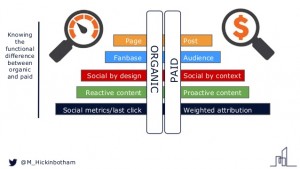
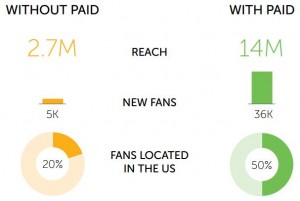

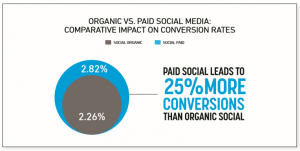
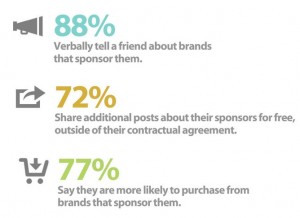
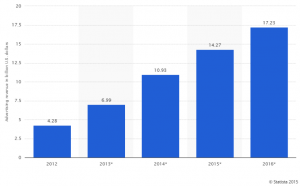
I do heavy marketing on a personal level in the town I reside. On Facebook, I focus on the same way being low key and develope relationships.
Chris Owner CEL Financial Services Registered bonded California CTEC Tax Preparer Income Tax Preparation Santa Paula Fillmore Piru http://www.taxprepfillmore.com/santa-paula-tax-preparation